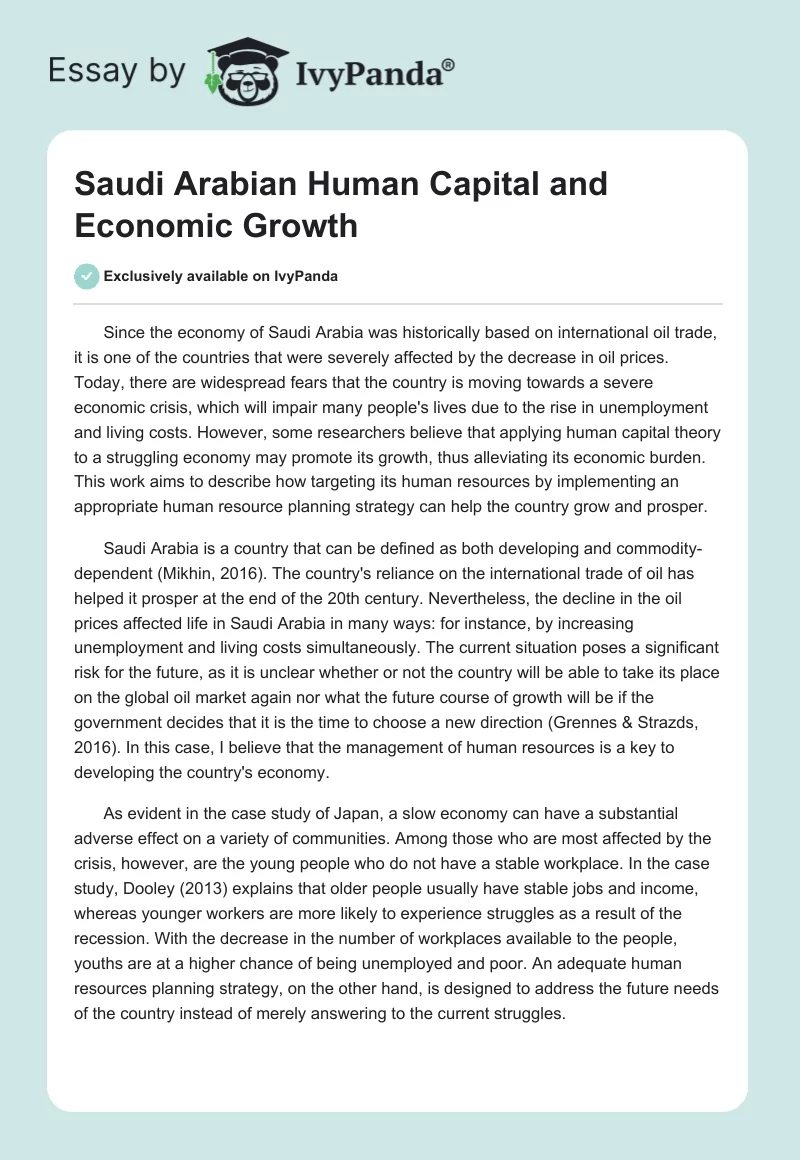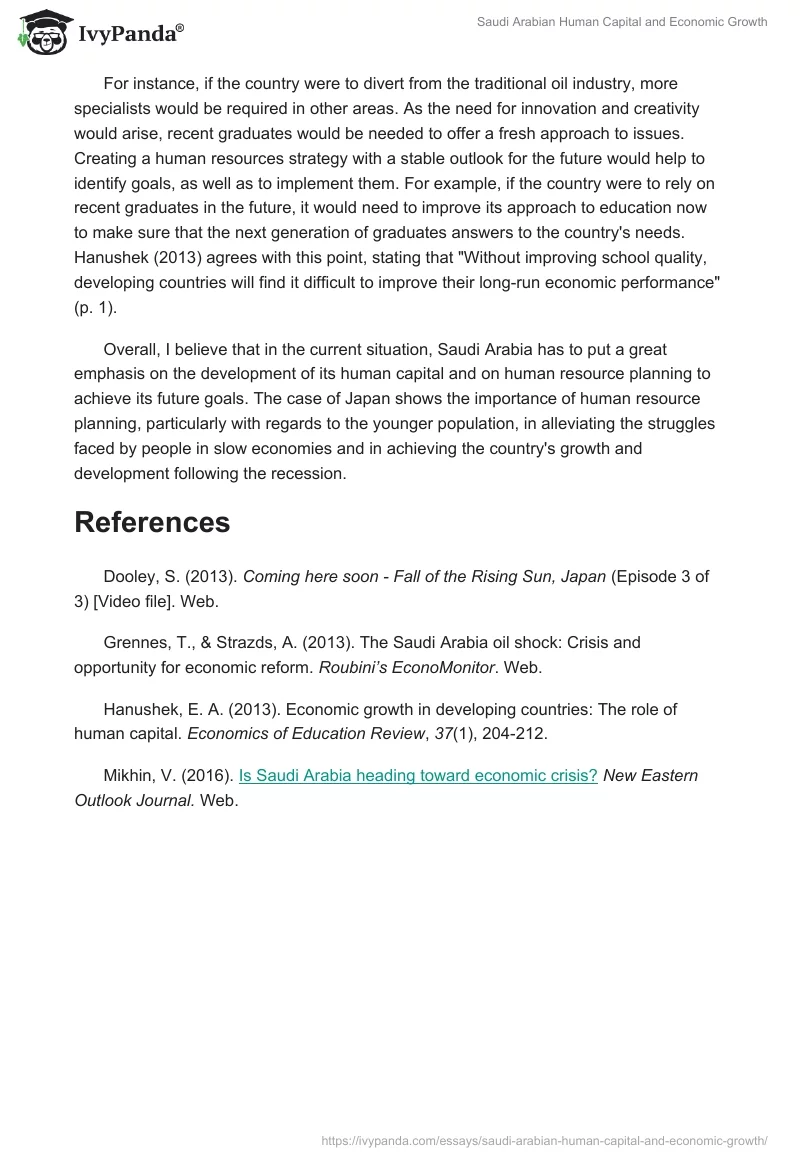Since the economy of Saudi Arabia was historically based on international oil trade, it is one of the countries that were severely affected by the decrease in oil prices. Today, there are widespread fears that the country is moving towards a severe economic crisis, which will impair many people’s lives due to the rise in unemployment and living costs. However, some researchers believe that applying human capital theory to a struggling economy may promote its growth, thus alleviating its economic burden. This work aims to describe how targeting its human resources by implementing an appropriate human resource planning strategy can help the country grow and prosper.
Saudi Arabia is a country that can be defined as both developing and commodity-dependent (Mikhin, 2016). The country’s reliance on the international trade of oil has helped it prosper at the end of the 20th century. Nevertheless, the decline in the oil prices affected life in Saudi Arabia in many ways: for instance, by increasing unemployment and living costs simultaneously. The current situation poses a significant risk for the future, as it is unclear whether or not the country will be able to take its place on the global oil market again nor what the future course of growth will be if the government decides that it is the time to choose a new direction (Grennes & Strazds, 2016). In this case, I believe that the management of human resources is a key to developing the country’s economy.
As evident in the case study of Japan, a slow economy can have a substantial adverse effect on a variety of communities. Among those who are most affected by the crisis, however, are the young people who do not have a stable workplace. In the case study, Dooley (2013) explains that older people usually have stable jobs and income, whereas younger workers are more likely to experience struggles as a result of the recession. With the decrease in the number of workplaces available to the people, youths are at a higher chance of being unemployed and poor. An adequate human resources planning strategy, on the other hand, is designed to address the future needs of the country instead of merely answering to the current struggles.
For instance, if the country were to divert from the traditional oil industry, more specialists would be required in other areas. As the need for innovation and creativity would arise, recent graduates would be needed to offer a fresh approach to issues. Creating a human resources strategy with a stable outlook for the future would help to identify goals, as well as to implement them. For example, if the country were to rely on recent graduates in the future, it would need to improve its approach to education now to make sure that the next generation of graduates answers to the country’s needs. Hanushek (2013) agrees with this point, stating that “Without improving school quality, developing countries will find it difficult to improve their long-run economic performance” (p. 1).
Overall, I believe that in the current situation, Saudi Arabia has to put a great emphasis on the development of its human capital and on human resource planning to achieve its future goals. The case of Japan shows the importance of human resource planning, particularly with regards to the younger population, in alleviating the struggles faced by people in slow economies and in achieving the country’s growth and development following the recession.
References
Dooley, S. (2013). Coming here soon – Fall of the Rising Sun, Japan (Episode 3 of 3). Web.
Grennes, T., & Strazds, A. (2013). The Saudi Arabia oil shock: Crisis and opportunity for economic reform. Roubini’s EconoMonitor. Web.
Hanushek, E. A. (2013). Economic growth in developing countries: The role of human capital. Economics of Education Review, 37(1), 204-212.
Mikhin, V. (2016). Is Saudi Arabia heading toward economic crisis? New Eastern Outlook Journal. Web.


